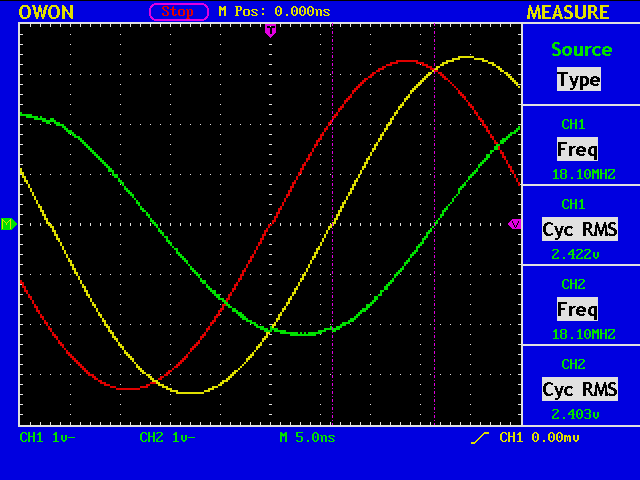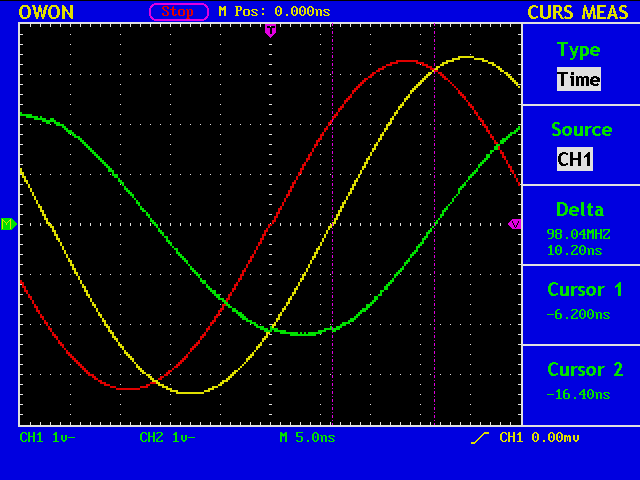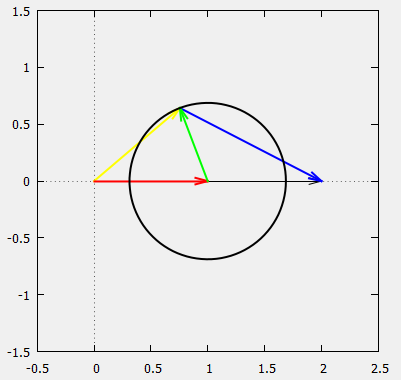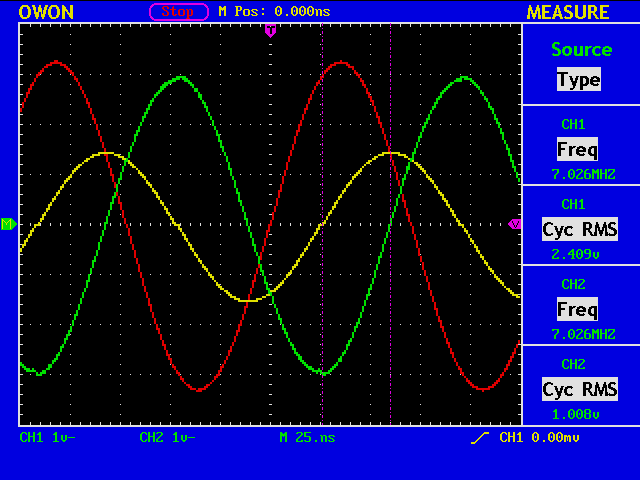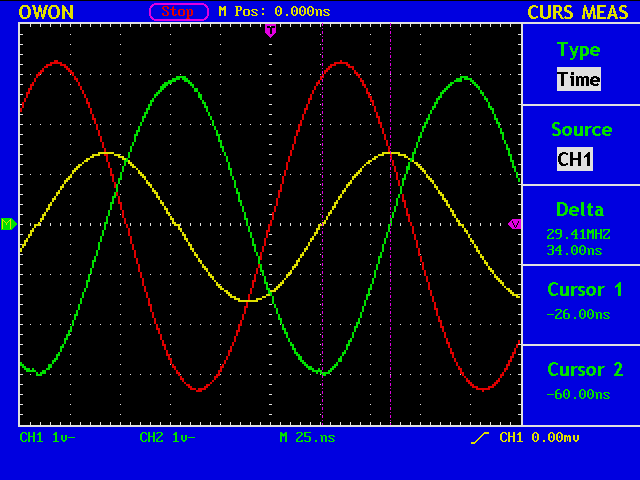Using the same elements and a cable, a 18MHz dipole is moved slightly in its position.
The voltage ratio V2/V1=2.403/2.422=0.992, and the delay of V2 against V1 is 40.4deg (=360deg*6.20nS/55.2nS).
(%i) V1:1.0+%i*0.0; (%i) t:2.0*3.1416*(-40.4/360.0); (%i) V2:0.992*(cos(t)+%i*sin(t)); (%i) Vr:2*V1-V2; (%i) z:50.0*V2/Vr; (%i) realpart(z); (%o) 13.42379132002304 (%i) imagpart(z); (%o) -32.76468187626101 (%i) abs(z); (%o) 35.40794475617177 (%i) g:(z-50)/(z+50); (%i) abs(g); (%o) 0.6878765282155 (%i) SWR:(1+abs(g))/(1-abs(g)); (%o) 5.407720600329899
gnuplot> set object 1 rectangle from screen 0,0 to screen 1,1 fillcolor rgb "#f0f0f0" behind gnuplot> set size square gnuplot> set xrange[-0.5:2.5] gnuplot> set yrange[-1.5:1.5] gnuplot> set zeroaxis gnuplot> set parametric gnuplot> plot [0:2*pi] 1+cos(t)*0.6878,sin(t)*0.6878 lw 2 lt -1 notitle gnuplot> set arrow 3 from 0,0 to 0.992*cos(40.4/360.0*2.0*3.1416),0.992*sin(40.4/360.0*2.0*3.1416) lw 2 lt 6
The same antenna, but at 7026kHz.
The voltage ratio V2/V1=1.008/2.409=0.418, and the delay of V2 against V1 is 65.8deg (=360deg*26.0nS/142.3nS).
(%i) V1:1.0+%i*0.0; (%i) t:2.0*3.1416*(-65.8/360.0); (%i) V2:0.418*(cos(t)+%i*sin(t)); (%i) Vr:2*V1-V2; (%i) z:50.0*V2/Vr; (%i) realpart(z); (%o) 2.40689877387539 (%i) imagpart(z); (%o) -10.92662280617141 (%i) abs(z); (%o) 11.18857665907635 (%i) g:(z-50)/(z+50); (%i) abs(g); (%o) 0.91215699937376 (%i) SWR:(1+abs(g))/(1-abs(g)); (%o) 21.76789255537643

